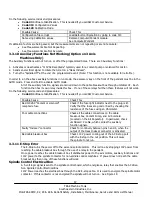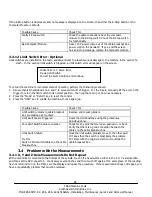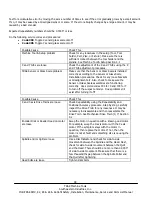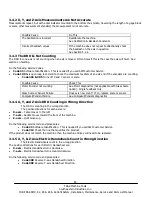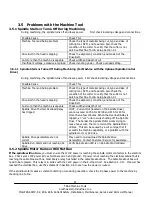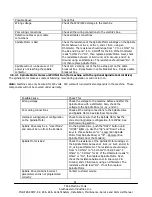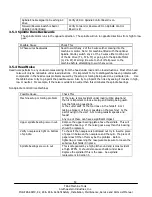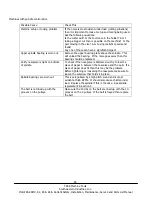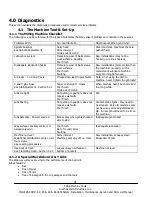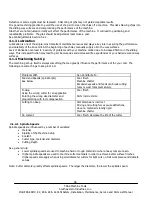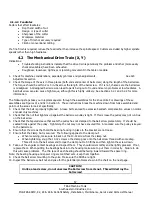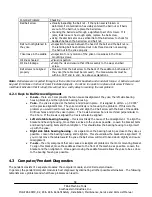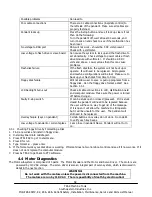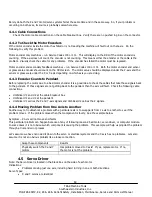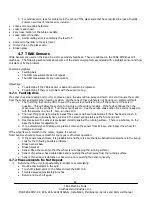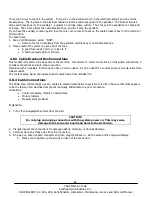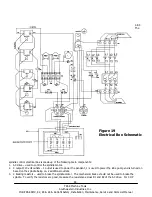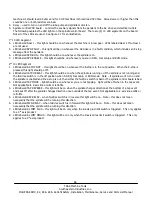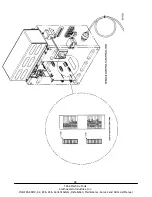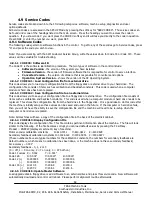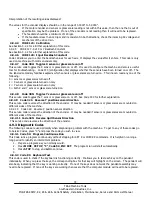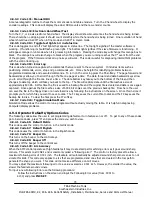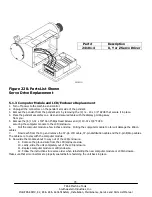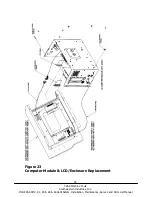
61
TRAK Machine Tools
Southwestern Industries, Inc.
ProtoTRAK SMX, K2, K3 & K4 & Retrofit Safety, Installation, Maintenance, Service and Parts List Manual
Objective:
Isolate the problem to the particular Servo Driver
Steps:
1.
Turn off and unplug the system.
WARNING!
Do not work with the Servo Driver unless the power is disconnected from the machine. There is
possibility of death by electrocution!
2.
Physically swap the servo module from the axis that is not working to one that is.
Note: To avoid pulling the wires out of the connector, use the loop to pull the connector from the Servo Driver.
If the problem moves to the other axis and clears up from the original axis, replace the Servo Driver.
4.6 Glass Scales
Glass scales are used on the X and Y-axis for secondary feedback. They are optional on the TRAK Knee mill machines.
The Z glass scale comes standard with the machine.
4.6.1 Alignment of scales
X Axis - The X-axis scale must be aligned within 0.005” in the up and down direction over the length
of the scale for proper operation. Misalignment can cause the scale to not read in the certain areas
of the scale that are not aligned with the reader head. If this happens, the axis will mostly likely
fault out in this area. Also make sure the mounting hardware for the reader head is tight. Loose
hardware can cause excess backlash when reversing direction.
To align the scale, place a 0.001” indicator on the bed ways and on top of the scale extrusion. Move the table along its
full travel from one end to another to verify it is aligned. If the scale is misaligned loosen the 2 screws at either end to
shift the scale up or down as needed. You will also need to loosen the center support bracket to allow the scale to pivot.
Y Axis
- The Y-axis must be aligned in the up and down direction and must be parallel to the Y-axis
way surface. Both surfaces must be aligned to within 0.005”. Failure to align the scale properly
could cause the same problems as mentioned above. Mount your 0.001” indicator on the saddle
and move the Y-axis back and forth along its travel.
Z Axis
– The Z scale must be aligned parallel with the quill. Make sure the gap on the readerhead
is consistent along the length of travel. Align the scale within 0.005” up and down.
See Figure 28 in Section 5 for an illustration of the Z glass scales.
4.6.2 Measurements Do Not Repeat
1.
Determine if the error in repeatability is random or accumulating:
Mount a dial indicator in the quill.
Touch off a fixed point on the table and set the DRO to 0.
Traverse away approximately 6 inches.
Return the touch off again.
Write down the reading on the DRO.
Do not Re-zero the DRO, traverse away and return several times.
Write down the DRO readings
Random error will be unpredictable and give scattered readings, adding and/or subtracting
the error after each traverse with no pattern. See Step 2.
Accumulating error will add roughly the same amount to the reading after each traverse. See Step 3.

